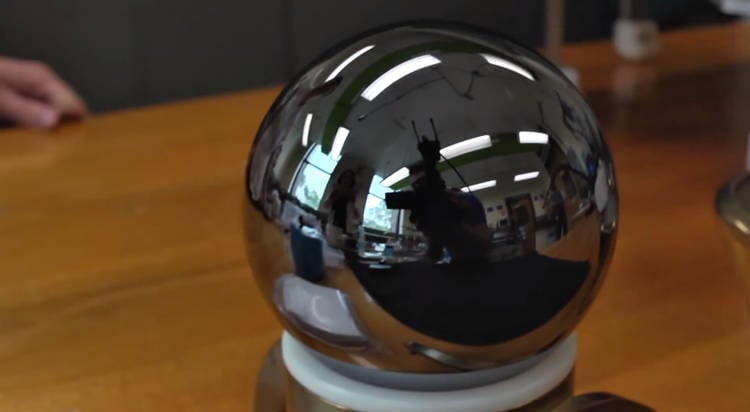Made out of a single, very expensive, crystal of silicon-28 atoms, and extensively analyzed for imperfections by both humans and computers, this “nearly perfect” sphere is the world’s roundest object.
The surface of the world’s roundest object is so smooth that if you were to blow it up to the size of our planet, the difference between the highest peak and the lowest valley would be between 3m and 4.5m (10 and 15 feet). It used to be around 15m back when scientists started making these amazing spheres, but technology has gotten better at smoothing out even the tiniest wrinkles. However, creating such a wonder isn’t cheap. The silicone crystal alone costs around $1 million, while the sphere itself, although often described as priceless, costs around $3.5 million.

Photo: YouTube/Veritasum
But why spend a small fortune on creating something incredibly round? Well, apparently it was all part of an effort to solve the longest running problem in measurement: defining the kilogram. Yes, it seems that unlike other scientific measurement units that can be theoretically measured based on their intrinsic natural properties, the kilogram is different.
For instance, the second can be counted by an atom’s transition between two levels of energy, a meter is the distance light travels in a tiny fraction of a second, but a kilogram has always been based on a specific physical object. In1799 it was defined as the mass of one liter of water at 4 degrees Celsius. Then, in 1899, it became the mass of a cylinder of platinum and iridium stored in a secured vault at the Bureau International des Poids et Mesures in Paris.
There was a problem with this cylinder that the kilogram was based on. At some point, scientists found that, for unknown reasons, the mass of the cylinder kept changing. To make matters worse, when compared to 40 other replicas of this object stored in different environments, they didn’t all weigh the same. So instead of a permanent value, the kilogram was based on a physical object that kept changing, and that was a serious problem.
It was this scientific debacle that the people involved in the Avogadro Project set out to solve. The idea behind the project was that in a perfect crystal sphere of silicon-28 atoms, the number of atoms in the sphere could be calculated using a laser to measure the diameter. The number of atoms could then be counted to determine Avogadro’s number, which would then define the kilogram. This way, the object chosen to define the kilogram would stay the same over time.
The brilliant minds behind the Avogadro Project teamed up with researchers at the Centre for Precision Optics to create this nearly flawless silicon-28 sphere. After the smooth sphere was ground out of the silicon crystal, computer-guided lasers were used to scan it for the slightest deviations, and a master lens maker spent hundreds of hours correcting them. With a roundness delta of less than 50 nano-metres over a 93.6 mm diameter, the sphere is widely regarded as the roundest object on Earth.
Alas the Avogadro Project eventually failed to change the way the kilogram was defined. In 2019, the definition of the mass unit was changed; a kilogram is now defined in terms of the second and the meter, based on fixed fundamental constants of nature. But that was not the end of for the world’s roundest object.
The amazing silicon-28 sphere found a new home with Heason Technology, a UK-based manufacturer of precision servo electric actuators, positioning systems and motion control solutions. It is now used to design, build and test new machinery at the company.












